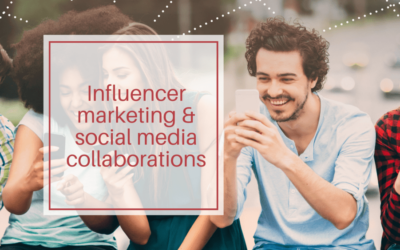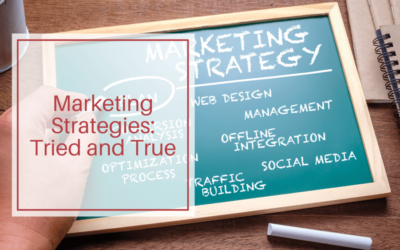Whatever your current small business marketing goal, Meta ads can help you achieve it. Of course, I’m not here to spruik Meta ads, and I honestly wish we could return to the days when our followers saw most of our posts. Alas, those days are behind us, and while organic reach on Facebook continues to decline, the offerings on Meta ads keeps improving.
That said, quality content on your Facebook (or Instagram) page remains just as important in this pay-to-play social media world whether you double down and grow organically or pay for advertising. Think of it this way: would you trust a product in an ad that came out of nowhere and had nothing to back it up?
Paid advertising and why organic content still matters
Organic content establishes know, like, and trust
Unless you are an ideally located coffee van, most sales take nurturing through a customer journey process. Your customer will usually pass through the first two steps – realising they need your product/becoming aware of your brand, then researching you – before purchasing. If you want them to go from being unaware of your brand to purchasing after just one touch point (so rare, I call it a unicorn sale), you must establish trust quickly. Do this with quality organic content on an established Facebook business page.
However, you wouldn’t normally ask someone to marry you on a first date. The same is true for sales. We invite completely new customers to buy into following you and learning more. Save the sales until you know each other better. Having a healthy following and quality organic content on the Facebook page you pay to advertise from encourages new people who see your advertisement to do just that, increasing the success of your paid marketing campaigns.
Show clients they can trust you with quality content, including:
- Expertise posts – showing your authority in the area.
- Testimonials and user-generated content – as evidence that others, like your new potential customer, have been pleased with their investment.
- Authenticity – allowing those new to the brand to get a feel for who you are.
- Customer engagement – how you respond to comments says a lot about your brand and whether people trust you.
- Number of followers and years on the platform – Lots of regular content over a long period with a reasonable number of followers equates to additional trust points whether we like it or not. Facebook may not care, but your audience will.
And don’t forget the basics:
- Consistency of brand visuals and personality.
- Quality matters, but imperfection is authentic – it’s a balance. Your Grandma and your next boss might see it. If they would both approve, hit publish.
- Video and posts that keep users on the platform will increase the reach of your post just a little.
- Pay attention to when your audience engages the most and schedule posts for that time of day to get a boost from their engagement.
To increase your following organically (either before or instead of paid advertising), remember to link to your social media account in your email footer, invite people to follow your business when you are networking, follow other people’s businesses to inspire follow backs, interact (without being painfully salesy) in relevant Facebook Groups, and ask your friends to help you out in the early days with some supportive engagement so the algorithm sees your worth too.
Bonus: Some say Facebook seems to give you a little boost on your organic content after and while you run an ad campaign. A bit of a thank you, perhaps? I can’t say for sure, but it is another great reason to have organic content as well as paid advertising.
Facebook Ad Manager, Meta ads, boosted posts – what’s the difference?
Boosted posts – target your existing followers
Organic reach on Facebook in 2024 has declined to around 2% of your followers. When you pay to boost a post, Facebook increases that number, showing more of your followers and some of their contacts too.
Boosting posts is a simple process offered in the Facebook app on existing posts and is useful when targeting the purchase stage of your customer journey – the followers you have been nurturing for a while who now know, like, and trust you.
Use boosted posts to share a happy customer testimonial or answer a common question to encourage followers to take that final step and purchase. Also great to offer your loyal supporters early access to a sale or new product. Use caution when your post contains a link to leave Facebook. While it might make sales easier, it may also reduce your reach as Facebook likes to keep users on the platform.
Note for Apple app users: A word to the wise for our Apple-loving friends. Facebook just announced that from Feb 2024, Apple will retain a 30% service charge on the total ad payment for boosts made through the Facebook iOS app. More information is available directly from the Meta Business Help Centre, including alternative boosting methods.
Facebook Ads Manager
Offered as an app on iOS and Android with ad targeting campaign options including real-time insights, Facebook Ad Manager can help you sort advertising for Facebook, Instagram and Messenger. It’s a good option for basic ad campaigns and time-pressed businesses targeting the brand awareness stage of the customer journey and seeking to increase followers. That said, I usually suggest that most of my clients jump straight to Meta Business Suite to future-proof and take advantage of its additional functions.
Meta Business Suite (aka Meta ads)
Meta Business Suite can coordinate your whole social media campaign. It’s a little more complex and takes time to set up, but it’s worth it, and provides measurable results.
Meta Business Suite lets you simultaneously target all customer journey stages across multiple platforms. Run ads designed to drive purchases, generate leads, increase engagement, get more website traffic, build brand awareness, or even increase the number of people who download your app.
It centralises your social media management, connects to third-party tools, provides insights, allows you to quickly draft and schedule posts, stories, and ads across all your Meta business channels and helps centralise notifications and inbox messages. It also provides insights and trends.
Meta ads – start simple
I recommend starting with a small budget in Meta Business Suite and running lots of A/B test campaigns to see what works. The information you gain is always worth it.
- Start with a clear goal, budget and understanding of your ideal customer for this part of the customer journey. Then, target the right key criteria – geographic location, age, other interests etc.
- Leverage what you know from your organic reach. Consider the styles that got the best engagement or conversations, and make sure your message is clear. What are you sharing with them, and what do you want them to do next?
- Monitor your results. Meta Business Suite provides all the data you need. As you run more campaigns, you can review what works and what doesn’t to inform the next. A/B test campaigns allow you to invest a little upfront and then more on the ad that performs better against your goal.
If you are thinking about advertising down the track and need to get your organic content started, that’s our specialty, and we’d love to hear from you. Book your free intro call today.



